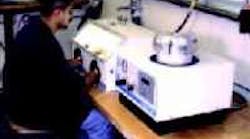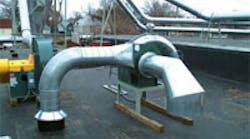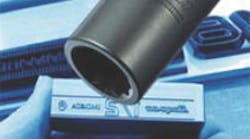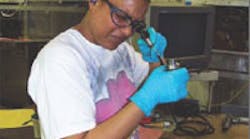A micro-abrasive PowerFlo 2400 provides greater air volume for using nozzles with larger openings, which means less time per blast at Meschkat Precision Machining.
Like many machine shops, Meschkat Precision Machining in Valencia, Calif., uses microblasting equipment for much of its part finishing — deburring, surface texturing, cleaning, and more. Of the shop's many jobs, 60% are medical tooling with lot sizes between 1 and 1,000 pieces or more. Because of increasing part volumes and sizes, microblasting became an extremely time-consuming process.
"The machine we were using didn't have enough capacity, and traditional bead blasting did not provide the degree of precision required," says Bodo Meschkat, company president. This is why the shop contacted its supplier, Comco Inc., to acquire a larger micro-abrasive PowerFlo 2400 machine.
The system provides greater air volume for using nozzles with larger openings, which means less time per blast. Shorter blast times reduce wear on internal blaster parts and increase production levels between refills.
"Cosmetic finishing is extremely important on many of the medical and surgical tools we make," says Meschkat. "Our customers specify a satin finish not only for appearance but also to reduce glare during surgery. These tools include sternum saws, drills, and other power tools, and some have relatively large surfaces for a blaster. We use 50-µ glass bead in our blaster to handle the intricacies of these tools, and a larger nozzle accommodates this." An array of high-performance carbide nozzles that provide long life and 20% tighter abrasive focus for less overspray are available for the PowerFlo. New nozzle designs also deliver up to 4 3 the wear resistance as compared to previous ones.
The blaster uses a valve system instead of a traditional pinch-tube mechanism to start and stop abrasive flow. There is no pressure on the tubing, so the blaster operates for over 250,000 cycles before the valve needs maintenance. Reportedly, a pinch would break through the tubing in less than a quarter of that time.
With the PowerFlo's microprocessor, Meschkat operators control and track the blast process remotely.
The processor stores and exports data for statistical-performance information by recording operating time and blast cycles. Users can also program the machine controls to signal when maintenance or refilling is needed.
Comco Inc.
Burbank, Calif.
comcoinc.com







